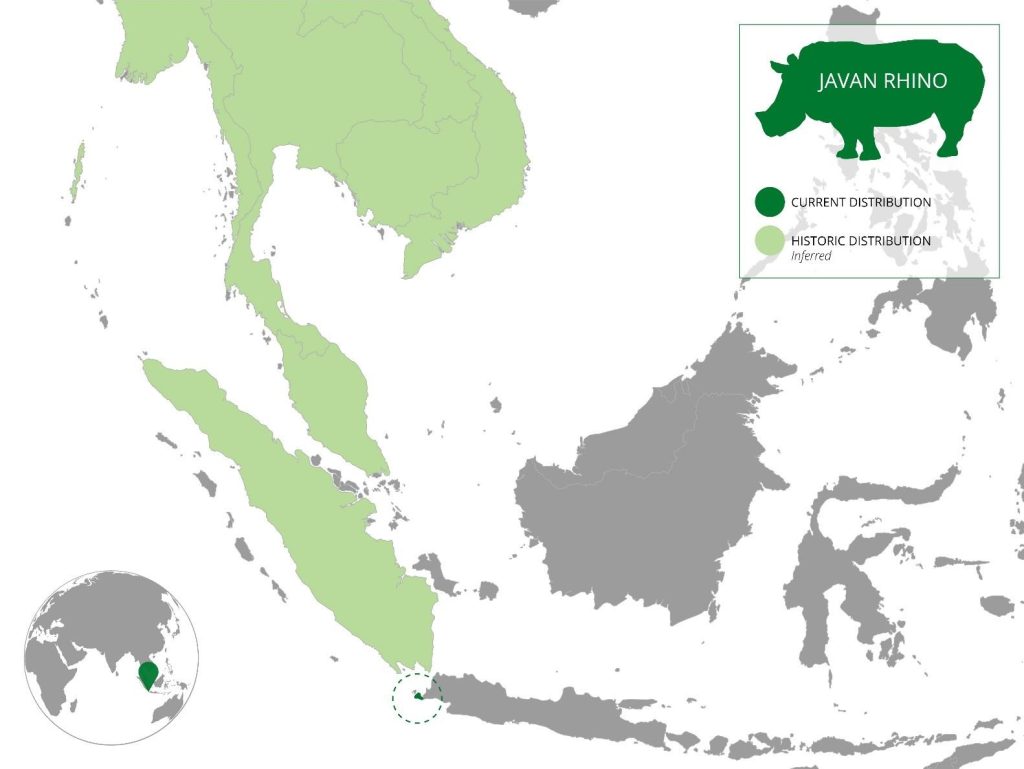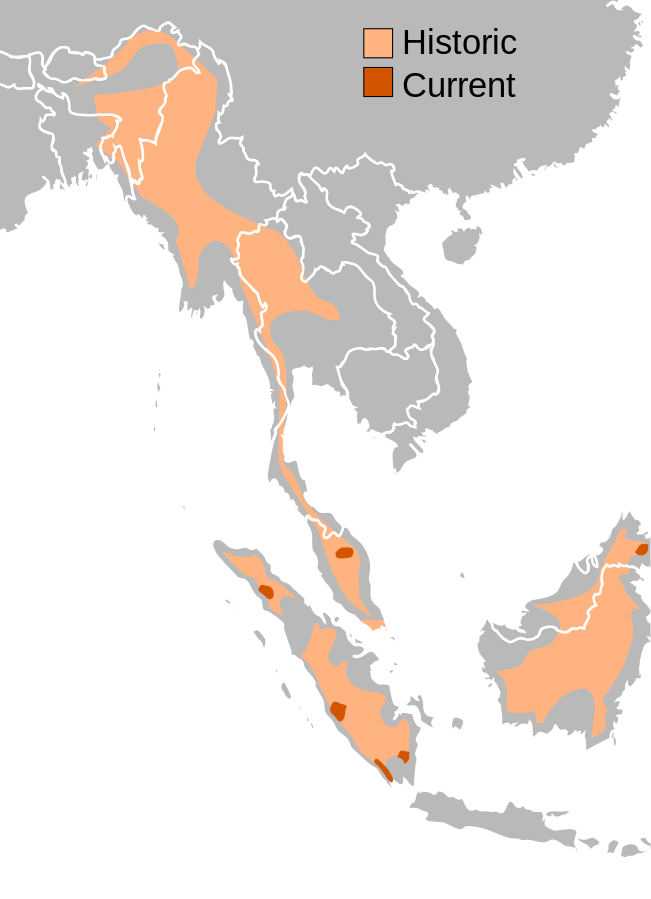The wildlife of Indonesia now often looks like relatively unique to those islands. This is not the natural state of affairs. 60,000 years ago, a cousin of the orangutan lived on the mainland. Unfortunately, what appears clear, is that humans were responsible for the extinction of these animals as with so many more.
There are 2 species of Indonesian Rhino, the Javan rhino and the Sumatran rhino. Now it should be noted that these names are not an indication of a small range (or if it is, it is wrong) in reality, both rhino species were far more widely spread. Indeed mainland specimens lived within the 21st century.

Javan rhino were once found throughout Sumatra, up throughout the whole of Malaysia, and up to include Vietnam, Cambodia and Thailand, up into Laos, and even Myanmar. Further north they ranged through northern India, and the Sundarbans.

The Sumatran rhino once roamed as far away as the foothills of the Eastern Himalayas in Bhutan and eastern India, through Myanmar, Thailand, possibly to Vietnam and China, and south through the Malay Peninsula. Today, the species only survives on the Indonesian islands of Sumatra and Borneo. It should be noted that many of these red areas are very delicate and close to being lost. Indeed, it is thought that the last mainland Sumatran rhino was lost back in 2010 (there is a red area that represents this area which has been lost in the last decade). Going further back, it is thought that the Sumatran rhino is most closely related to the Woolly rhino from the ice age.
There are a range of animals which have their last stronghold on islands off the coast. All rhino species have had their population repeatedly depleted by waves of poaching. The northern white rhino is functionally extinct with just a couple of remaining members (in the 1980s there were still thousands of of these rhino).
Even in in the last 15 years, the southern white rhino population of the Kruger has gone from over 10,000 to just under 3000 – when I trained as a field guide, white rhino was a common site, I have been within 10m of one on foot. Nowadays, unless you are in the right part of the park you wont see one. Black rhino are worse. Being browsers they spend most of their time out of site – this means that it is far harder to notice the black rhino poaching going on











